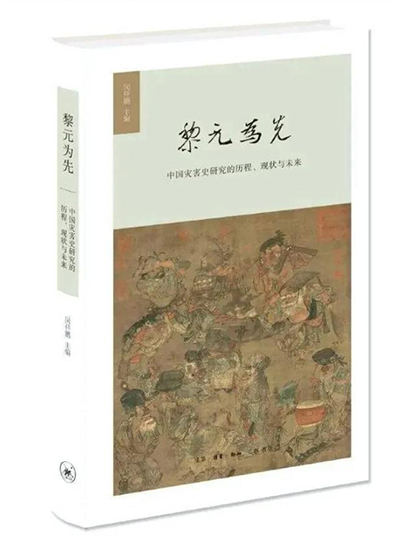Scholars shed light on Chinese disaster history studies

The Past, Present and Future Studies on Chinese Disaster History
Edited by Min Xiangpeng, a professor from the Key Research Institute of Yellow River Civilization and Sustainable Development at Henan University, The Past, Present and Future Studies on Chinese Disaster History gathers interviews with ten leading scholars in the field of disaster history. In addition to reviewing their own research experiences, they discuss disaster history research’s status and problems, frontier dynamics, and future trends.
In 1937, Deng Tuo (1912–1966), a student from Henan University, completed The History of Famine Relief in China, the first general history of disasters in China that laid the foundation for and ushered in modern research on disaster history in the country. Over the past eight decades, generations of scholars have committed to summarizing the historical experience of disaster relief and discussing the Chinese wisdom of disaster prevention and mitigation.
Scholars share a consensus of forward-looking views on the future of disaster history's research. When interviewed, Hao Ping, Ma Junya, Fang Xiuqi, and Zhou Qiong all highlighted the importance of interdisciplinary research on disaster history. The field of disaster history needs comprehensive studies that integrate the social sciences and natural sciences. Cross-over studies are necessary to further advance the field of disaster history, by drawing on the research approaches of environmental history, social history, and cultural history. The field will also benefit by comprehensively applying multi-disciplinary theoretical systems in the natural sciences and social sciences including climatology, seismology, ecology, economics, sociology, ethnology, folkloristics, anthropology, and psychology.
The book contains new insights from scholars. For example, Chen Yexin noted that disaster history studies should combine both internal and external history. Xia Mingfang proposed the concept of disaster humanities, and regards disasters as a driving force for social evolution.
The book also raises inspiring questions that deserve further discussion. For example, historical records tend to focus on central political areas in detail, while briefly introducing or even ignoring remote areas. There were few disaster records in the pre-Qin period (prior to 221 BCE), yet numerous records in the Ming and Qing dynasties (1368–1911). The significance of these documentary differences in central and remote areas, in early and late ancient times, needs further study.
Historical data on disasters offers evidence when exploring ancient climate changes. However, in recent years, this data was found to vary from the conclusions of natural science research based on stalagmites and tree rings, which lead to doubts raised by Zhang De’er, about Gerald Haug's conclusions regarding ancient East Asian climate based on rock cores. As such, efforts should be made to further determine the accuracy of records and natural science methodology.
This article was edited and translated from Guangming Daily.
Edited by YANG LANLAN
